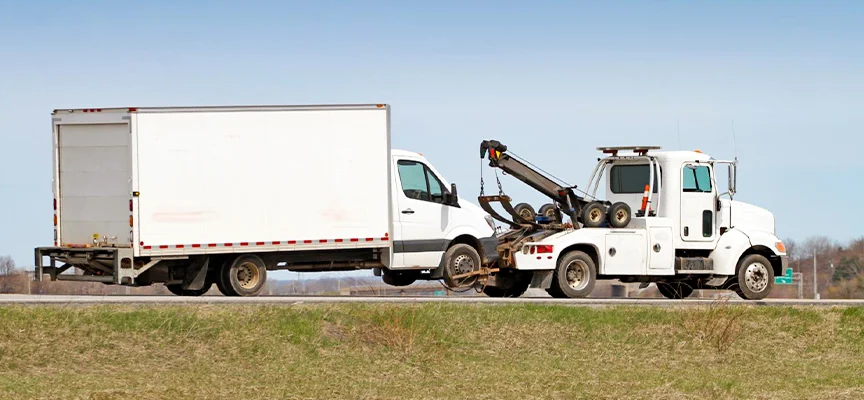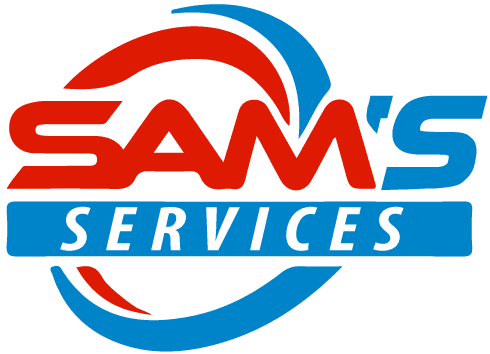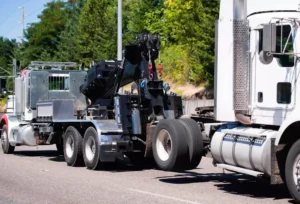
When a commercial truck breaks down on the road, time is money — and choosing the wrong towing solution can cost you both. Many drivers and fleet managers don’t realize that not all tow trucks are built the same. Some are designed for lighter commercial vehicles, while others are engineered to handle the heaviest rigs on the highway. This is where medium duty towing and heavy duty towing come into play.
Understanding the difference between these two towing categories is crucial if you want to avoid delays, reduce repair costs, and protect your equipment from damage. Whether it’s a delivery truck stalled in downtown Houston or a fully loaded semi stuck on the interstate, knowing which service you need ensures the right truck, the right tools, and the right expertise arrive quickly.
At Sam’s Services, we specialize in both medium duty towing and heavy-duty recovery solutions, so no matter the size of your vehicle or the complexity of the situation, our team is ready 24/7 to get you back on the road safely and efficiently.
What Is Medium Duty Towing?
Medium duty towing is designed for vehicles that are larger and heavier than passenger cars but don’t require the immense power of heavy-duty equipment. These vehicles often include:
Box trucks and step vans
Delivery vehicles
Class C RVs and shuttle buses
Utility and service trucks
Small construction equipment
These types of vehicles typically weigh between 10,000 and 26,000 pounds. Medium-duty tow trucks use wheel-lift, boom, or flatbed systems that provide precision and safe handling in a variety of conditions.
Because these tow trucks are smaller and more maneuverable, they’re ideal for urban environments and tight spaces where heavy-duty equipment might be difficult to deploy. For example, if a delivery truck stalls in downtown Houston, a medium-duty tow truck can respond quickly, clear the roadway, and get the vehicle to a repair facility without major disruption.
When quick roadside support is needed, services like Roadside Assistance can often resolve smaller issues on-site — but if towing is necessary, medium-duty equipment is typically the right choice.
What Is Heavy Duty Towing?
Heavy duty towing is used for the largest, heaviest, and most complex vehicles on the road. These include:
Semi trucks and tractor-trailers
Fully loaded 18-wheelers
Dump trucks and cement mixers
Motorcoaches and large buses
Heavy construction machinery and oversized loads
These vehicles exceed 26,000 pounds, and towing them safely requires specialized rotators, high-capacity booms, multi-ton winches, and heavy-duty rigging systems. Because of their size and weight, heavy-duty recoveries often involve more than just towing — they may include load shifts, accident recovery, winching, or even hazmat support.
For example, if a fully loaded semi jackknifes on the highway, you’ll need more than just a tow. A team equipped for Towing and Recovery — with the right heavy-duty equipment — is essential to clear the scene, protect cargo, and minimize downtime.
For a complete breakdown of how this service works, check out our Complete Guide to Semi Truck Towing.
Key Differences Between Medium and Heavy Duty Towing
While both services share the same goal — transporting a disabled vehicle safely — they differ in several critical ways. Here’s what sets them apart:
1. Vehicle Weight and Capacity
Medium Duty Towing: Handles vehicles between 10,000 and 26,000 lbs.
Heavy Duty Towing: Required for anything over 26,000 lbs.
Knowing your vehicle’s weight class is the first step in choosing the right service. A medium-duty truck simply won’t have the power or stability to tow a fully loaded tractor-trailer — and trying to do so can cause significant damage.
2. Equipment and Technology
Medium Duty: Uses flatbeds, wheel lifts, and standard tow trucks for straightforward recovery.
Heavy Duty: Relies on rotators, 50-ton booms, high-capacity winches, and advanced rigging systems.
The level of technology involved is dramatically different. Heavy-duty tow trucks are essentially mobile recovery units, capable of upright rollovers, lifting heavy cargo, and safely transporting massive loads.
3. Type of Recovery
Medium Duty: Typically involves simple tows, roadside breakdowns, and transport to repair shops.
Heavy Duty: Often requires complex recoveries, accident response, or towing vehicles in dangerous conditions.
For instance, a medium-duty tow truck might be perfect for a broken-down utility truck on a delivery route. But if a tractor-trailer tips over due to shifting cargo, heavy-duty towing with load stabilization may be needed.
4. Cost Considerations
Medium Duty: More cost-effective due to simpler equipment and shorter recovery times.
Heavy Duty: Higher cost because of specialized gear, larger crews, and longer job durations.
If you’re concerned about expenses, check out our guide on Understanding Heavy Duty Towing Cost — it breaks down what influences pricing and how to plan ahead.
5. Response Time and Logistics
Medium Duty: Faster to deploy and navigate, especially in tight urban areas.
Heavy Duty: Requires careful planning, route management, and often coordination with authorities.
Because heavy-duty recoveries are more complex, they often take longer to plan and execute. That’s why having a 24/7 partner like Sam’s Services is critical — our dispatch team quickly assesses the situation and sends the right truck for the job.
Roadside Support You Can Count On
No matter the situation, our reliable roadside assistance ensures you get the help you need, fast. From breakdowns to emergencies, we’re here 24/7 to keep you moving.
Choosing the Right Towing Option: Real-World Scenarios
Here are two examples that highlight when to use each service:
Scenario 1: Medium Duty Towing
A utility company’s work truck breaks down during a service call in downtown Houston. Traffic is heavy, space is tight, and getting the vehicle off the road quickly is a priority. A medium-duty tow truck arrives within 30 minutes, lifts the truck, and transports it to a nearby shop.
Scenario 2: Heavy Duty Towing
A loaded 18-wheeler jackknifes on I-45, blocking two lanes of traffic. This requires heavy-duty rotators, winching, and possibly Hazmat Clean-Up if fuel has spilled. A heavy-duty tow crew arrives, recovers the vehicle, and clears the road safely and efficiently.
These real-world examples show how choosing the right towing service can make all the difference in downtime, safety, and cost.
Why Working with a Full-Service Towing Partner Matters
One of the biggest mistakes fleet operators make is calling a towing company that only handles one type of service. If they send the wrong truck, your downtime increases — and costs go up.
Partnering with a company that provides both medium and heavy duty towing ensures the right equipment is dispatched immediately. At Sam’s Services, we don’t just tow — we provide comprehensive support, including Trailer Repairs, Wheel Alignments, and even Equipment Lease and Sale if your vehicle is down long-term.
We also offer emergency 24/7 Heavy Duty Towing Near Me — so you’re never stranded, no matter where or when a breakdown occurs.
Final Thoughts: Make the Smart Choice Before a Breakdown Happens
When it comes to towing, one size does not fit all. Knowing the difference between medium duty towing and heavy duty towing ensures your vehicle is handled safely, your costs are controlled, and your downtime is minimized.
Use medium duty towing for box trucks, service vehicles, and mid-sized commercial equipment.
Choose heavy duty towing for tractor-trailers, oversized machinery, and complex recoveries.
Whether you’re managing a local delivery fleet or hauling freight across Texas, Sam’s Services is Houston’s trusted partner for safe, efficient towing and recovery.
If your vehicle is stuck, don’t wait — Contact Us now and let our expert team handle the rest.
Frequently Asked Questions (FAQs)
Medium duty towing is typically used for vehicles such as box trucks, delivery vans, RVs, and small buses. It’s ideal for vehicles that are too large for light-duty tow trucks but don’t require the power of heavy-duty towing equipment.
Heavy duty towing is designed for large, heavy vehicles like semi trucks, tractor-trailers, and heavy construction equipment. Medium duty towing handles mid-sized commercial vehicles, offering a balance of power and maneuverability.
Choose medium duty towing when your vehicle weighs between 10,000 and 26,000 pounds and requires professional towing support. It’s the best option for vehicles that are too heavy for standard tow trucks but don’t need a full heavy-duty recovery truck.
Yes, medium duty towing is fully equipped to respond to roadside breakdowns on highways and city roads. Tow trucks in this category are designed to quickly recover vehicles while minimizing traffic disruptions.
The cost of medium duty towing depends on the distance, type of vehicle, and the complexity of the situation. On average, services range from $200 to $600, but specialized recoveries or long-distance towing may cost more.



